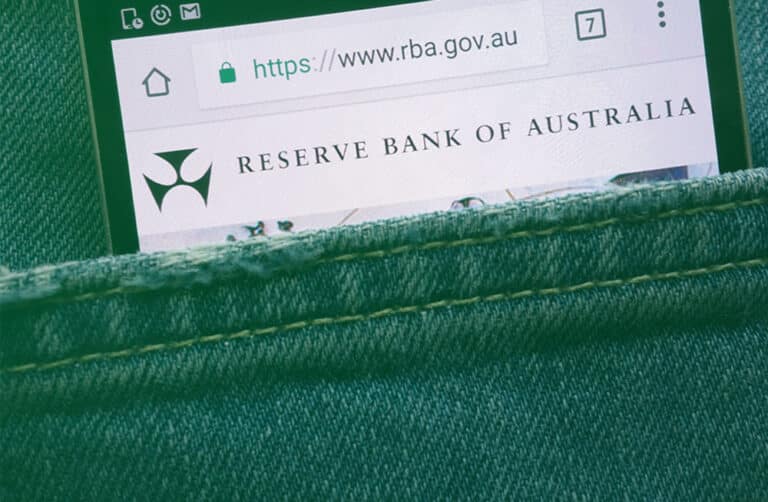
The RBA raised the official cash rate by 25 basis points to 2.85% in line with market expectations. Apostle Funds Management’s Steven Spearing provides his key takeaways.
Key takeaways
- The RBA’s priority is to return inflation to 2-3%, and it will do what is necessary to achieve that, but it is seeking to do so while keeping the economy on an even keel
- Global factors as well as strong domestic demand are contributing to the high level of inflation, and a further increase in inflation is expected in the months ahead.
- The RBA increased its inflation forecast to peak at around 8% later this year before declining next year as supply-side issues, commodity prices and demand ease.
- Notably, medium-term inflation expectations remain well anchored, and it is important that this remains the case. The Bank’s central forecast is for CPI inflation to be around 4¾ per cent over 2023 and a little above 3 per cent over 2024
- GDP forecasts have been revised down to 3% this year, falling to 1.5% in 2023 and 2024.
- The labour market remains very tight, and unemployment is expected to remain at current levels over the coming months before increasing to 4%+ in 2024.
- Wage growth is picking up but remains lower than many advanced economies – the Board will be monitoring this closely to avoid a prices-wages spiral.
- They again pointed to household spending and the impact of higher mortgage repayments on household budgets being an important factor to future rate hikes and acknowledged the deteriorating outlook for the global economy as a source of uncertainty.
- The size and timing of future interest rate increases will continue to be determined by the incoming data and the Board’s assessment of the outlook for inflation and the labour market.
Also read: Sustainable Debt Investing In Emerging Markets Requires A Scalpel, Not A Hammer
What has changed over the last month?
The big data point over the past month was of course inflation. Australia’s headline inflation rate for Q3 which came in at 7.3% (vs 7% consensus). The RBA Trimmed Mean CPI jumped 6.1% YoY, the fastest pace since the series began, and revealed that price pressures are broad based with prices of nearly all components rising. So, we have the ‘sticky’ component of inflation flashing warning signs, and we also have energy prices in Australia forecast to rise 50% or more over the coming 12 months which will add additional, significant inflationary pressures across the economy. This is a big red flag for the RBA who took their foot off the interest rate accelerator at their October meeting. However, the RBA stuck to the script this time by delivering a consecutive 25 basis point hike, taking the cash rate to 2.85%, and remaining vigilant in allowing the effects of a period of aggressive rate hikes to flow through the economy so that it can more accurately assess the outlook for inflation and economic growth.
What does this mean looking forward?
The RBA has now taken the cash rate to 2.85% and are not done yet. We expect the pace of hikes to remain at 25 basis point increments in their upcoming meetings. Incoming data will remain as important as ever, and we should take note that they remain focused on bringing inflation down, which means that larger rate hikes are not yet off the table, and the peak in the cash rate is going to be data dependent. It will continue to remain first and foremost focused on addressing inflation, but they are clearly being mindful of downside risks to growth while trying to carve out their path. The RBA meet once more time this year, on the 6th of December, where they are likely to take the cash rate to 3.10% by year end. We expect to see another rate hike following that, taking the cash rate to 3.35%, before they consider pausing. Whether or not they do so will be heavily dependent on what incoming data between now and then reveals.
In the domestic economy there are three key factors impacting inflation that the RBA will be closely monitoring: the consumer, the labour market, and the housing market. These are the factors it can influence through its monetary policy mechanism. Inflation data is of course the most important piece of the puzzle – the mandate of the RBA is to keep inflation between 2-3% – so all other factors can be considered for how they will impact inflation, which will in turn impact interest rate decisions. In addition to that there are global factors which it by in large cannot control but will take into consideration in its decision making. If we consider how these factors are all contributing to inflation, we can conclude that there are still significant domestic and global inflationary pressures in Australia, but the trend in a number of the underlying factors is positive and the impact they are having on keeping inflation elevated is gradually easing. For example, immigration levels, although trailing pre-pandemic levels, are rising, which should help to ease the shortage in labour supply. Higher mortgage repayments will continue to erode household savings and put pressure on household budgets, as house prices continue to decline. That is not to say that inflation won’t remain elevated for some time, it might, especially as broad-based inflation signifies that businesses are becoming more comfortable raising prices and consumers are become more accepting of this. But it does tell us that interest rate hikes are slowly starting to bite, albeit into an economy that is remarkably tough coming out of such a long period of ultra-accommodative monetary policy and supported by a tight labour market and high levels of household savings. Maintaining pace at 25 basis point hikes tells us that the RBA is being prudent in its assessment of the economy, and that it is attempting to be mindful of the economy whilst combating inflation.

































